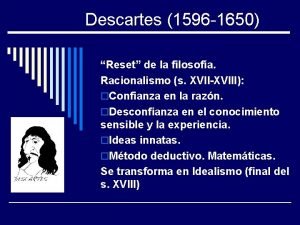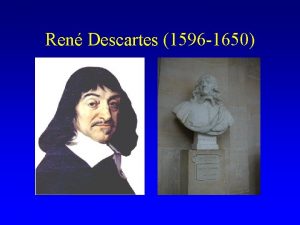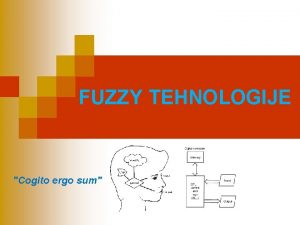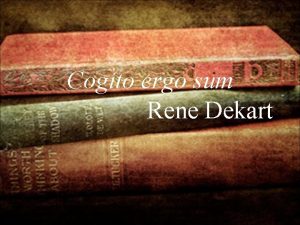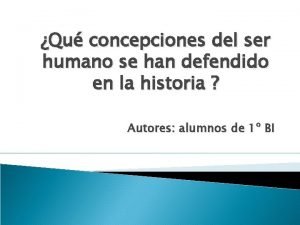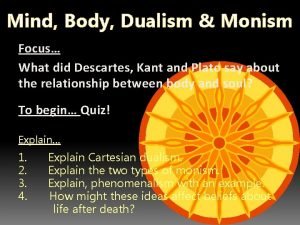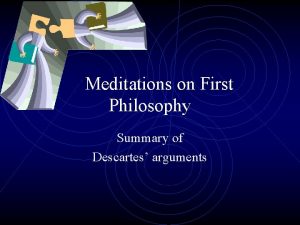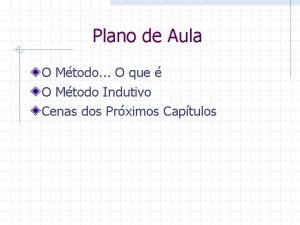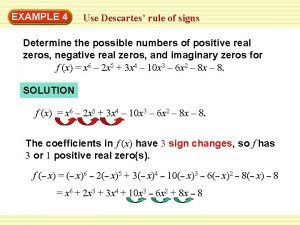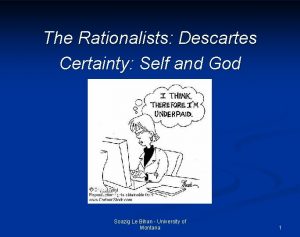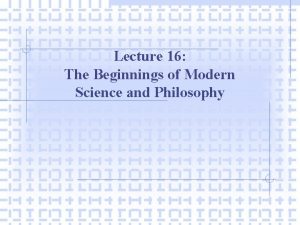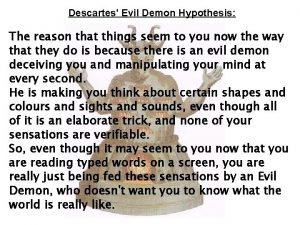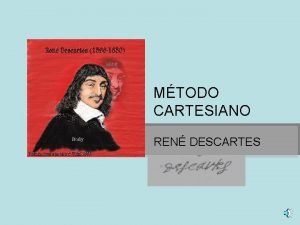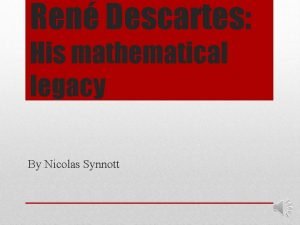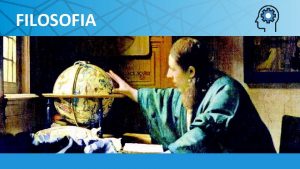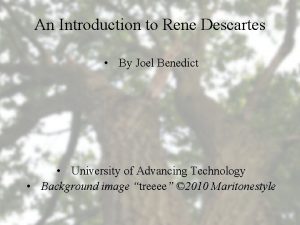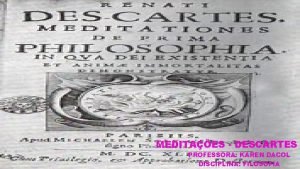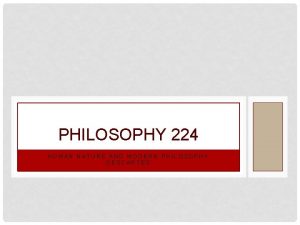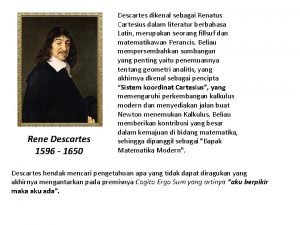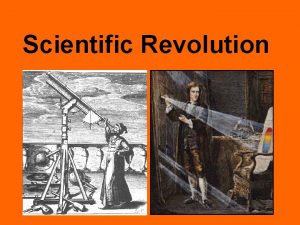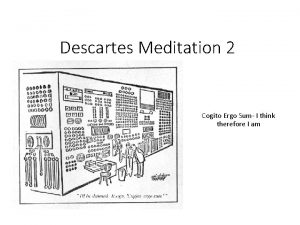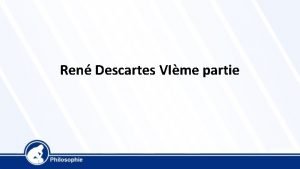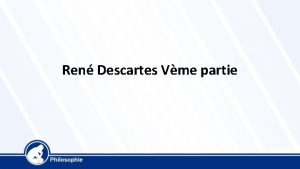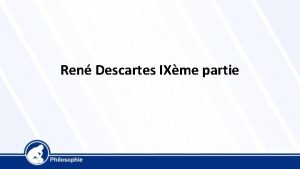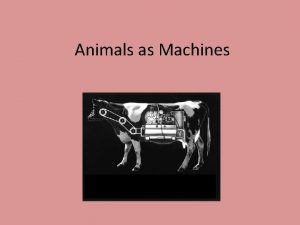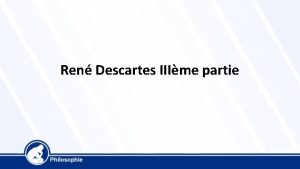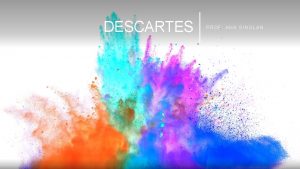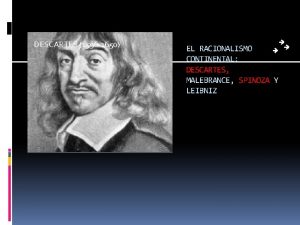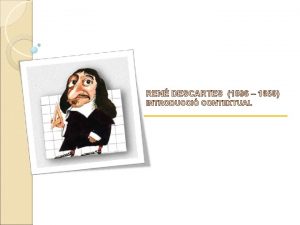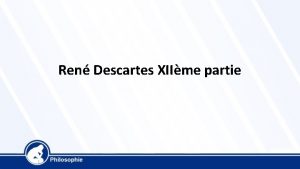Rene Descartes 1596 1650 Cogito ergo sum I



















- Slides: 19

Rene Descartes (1596 -1650) “Cogito, ergo sum” (I am think, therefore I am)

Who is Rene Descartes? Rene Descartes was–and is–considered the father of modern philosophy. But he was not only a philosopher. He is also a well known French mathematician and scientist.

Who is Rene Descartes? He was born in Descartes, formerly known as La Haye in Touraine. He was born in a family which produced a number of learned men. He’s the son of minor nobleman.

Who is Rene Descartes? During 1604 to 1612, Descartes studied at Jesuit College of La Flèche. However, he later claimed that education, except for mathematics, gave him “little of substance”. Only mathematics, he said, had given him certain knowledge.

Who is Rene Descartes? In his school, he was taught about Scholastic philosophy. This philosophy tried to understand the Christian doctrines with the use of human reason. Descartes was greatly influenced by the Roman Catholicism.

Who is Rene Descartes? In 1618, Rene Descartes joined the army of Prince Maurice of Nassau, leader of the United Province of the Netherlands. He, then, had the intent of pursuing a military career. Little did he know that he’ll be contributing a lot to science and philosophy.

Who is Rene Descartes? “In 1649 Descartes was invited to the court of Queen Christina of Sweden in Stockholm to give the queen instruction in philosophy. The rigors of the northern winter brought on the pneumonia that caused his death in 1650. ” (Encarta, 2004)

His Works Essais philosophiques (Philosophical Essays) which was published in 1637 was one of Rene’s works. This contains four parts: geometry, optics, meteors, and Discours de la mèthode (Discourse on Method). The last topic describes his philosophical speculations.

His Works His other works include Meditationes de Prima Philosophia (Meditations on First Philosophy) in 1641 and was revised in 1642. Principia Philosophiae (The Principles of Philosophy) in 1644 was also one of them. The latter, Rene dedicated it to Princess Elizabeth Stuart of Bohemia, a close friend of his.

… on Science Rene Descartes had been a supporter of the Copernican theory. However, when the Church claimed this theory as heretic, he abandoned it. He, then, made another theory, theory of vortices, in its place. In his theory, he stated that space consists of matter in various states that whirls around the sun.

… on Science He also touched physiology. Descartes believed that a part of the blood was fluid which he called animal spirits. These socalled animal spirits came into contact in the brain. Then it flowed along the nerve channels to stimulate body movement.

… on Science A law in physics was discovered by Descartes during his study of optics. The law states that the angle of incidence is equal to the angle of reflection.

… on Mathematics The systematization of analytic geometry was Descartes’ most notable contribution in the field of mathematics. He attempted to classify curves according to the types of equations produce them.

… on Mathematics In theory of equations, Descartes was the first one to use the last letters of the alphabet to stand for the unknowns and the first letters for the known ones (i. e. standard equation of the circle).

… on Mathematics “In addition, he formulated the rule, which is known as Descartes's rule of signs, for finding the number of positive and negative roots for any algebraic equation. ” (Encarta, 2004)

… on Philosophy In his philosophy, Descartes attempted to apply the rational inductive methods of science, in particular of mathematics. During his time, the method of Scholasticism was used. In that method, the people compare and contrast the views of the recognized authorities.

… on Philosophy But Descartes rejected the method. He stated, “In our search for the direct road to truth, we should busy ourselves with no object about which we cannot attain a certitude equal to that of the demonstration of arithmetic and geometry. ” Therefore, he was determined to does not believe in anything to be true unless proven.

… on Philosophy “The single sure fact from which his investigations began was expressed by him in the famous words Cogito, ergo sum, ‘I think, therefore I am. ’” (Encarta, 2004) This means that a clear consciousness of his thinking proves his existence. From that, he proved the existence of God.

… on Philosophy “God, according to Descartes's philosophy, created two classes of substance that make up the whole of reality. One class was thinking substances, or minds, and the other was extended substances, or bodies. ” (Encarta, 2004)
 Reglas de descartes
Reglas de descartes Cogito ergo sum essay
Cogito ergo sum essay Cogito ergo sum znacenje
Cogito ergo sum znacenje Cogito ergo sum dekart
Cogito ergo sum dekart Dualismo rené descartes
Dualismo rené descartes Dualism mind body problem
Dualism mind body problem Meditations descartes summary
Meditations descartes summary Método cartesiano
Método cartesiano Descartes' rule of signs
Descartes' rule of signs Rene descartes wax argument
Rene descartes wax argument Rene descartes contributions to psychology
Rene descartes contributions to psychology Evil genius hypothesis
Evil genius hypothesis Metodo cartesiano rené descartes
Metodo cartesiano rené descartes Rene descartes enlightenment
Rene descartes enlightenment Rene descartes legacy
Rene descartes legacy Dualismo rené descartes
Dualismo rené descartes Rene descartes background
Rene descartes background Método cartesiano
Método cartesiano Rene descartes human nature
Rene descartes human nature Descartes frans hals
Descartes frans hals
